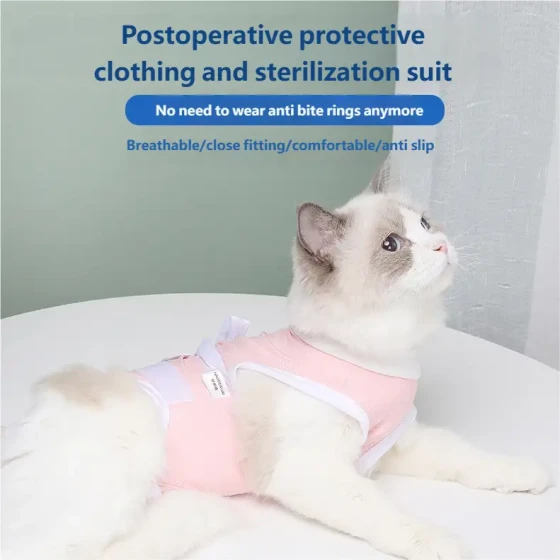Do You Have to Get Vaccinated After Being Bitten by a Cat_These Situations Require Rabies Vaccination After Cat Scratches
Whether you need a rabies vaccine after being bitten or scratched by a cat is a common concern among many pet-owning families and animal lovers. Simply put, not all cat scratches or bites require rabies vaccination, but as long as the skin is broken or the cat's health status and vaccination history cannot be confirmed, it is strongly recommended to promptly follow standardized post-exposure rabies procedures, including wound cleaning and rabies vaccination. Because rabies is an almost 100% fatal disease with no effective treatment after onset, prevention is crucial.

Rabies: An Almost Unsolvable “Terminal Illness”
Rabies, commonly known as “mad dog disease,” is an acute infectious disease caused by the rabies virus. This virus mainly attacks the nervous systems of humans and animals. Once the virus invades the brain and symptoms appear, the mortality rate for both humans and animals is nearly 100%. The frightening aspect is that there is no effective treatment after onset, only prevention through vaccination. Therefore, when facing rabies, we often say “prevention is better than cure,” and it is the “only” treatment.
According to data from the World Health Organization (WHO), rabies causes tens of thousands of deaths globally every year, with over 95% occurring in Asia and Africa. In our country, dogs and felines are the main sources of infection, especially stray animals or free-roaming domestic animals. Rabies virus is primarily transmitted through the saliva of infected animals; when an infected animal scratches, bites, or licks broken skin, the virus can enter the human body.
Should You Get Vaccinated After Being Scratched or Bitten by a Cat?
This is probably the most concerned question. Whether rabies vaccination is needed mainly depends on the following factors:
Strongly Recommended to Get Rabies Vaccination in These Situations
- Skin is broken, regardless of depth: As long as the skin is broken after a cat scratch or bite, even with slight visible scratches, abrasions, or minor bleeding, it means the virus might enter the body. Vaccination is the best prevention. Even if the cat's teeth or claws only "scratched" lightly and it feels a bit stingy, it is advised to pay attention.
- Unknown cat health status or vaccination history: If bitten or scratched by a stray cat of unknown origin, wild cat, or a domestic cat never vaccinated against rabies, or with unclear vaccine history, since the rabies virus carriage status is unknown, post-exposure prophylaxis should be done immediately for safety.
- Cat exhibits abnormal behavior: If the cat that scratched or bit shows unusual behavior before or after the incident, such as drastic personality changes, extreme excitement, abnormal lethargy, drooling, or hydrophobia (rabies symptoms), vaccination is urgent.
These Situations May Not Require or Can Be Observed
- Skin intact, only redness or slight scratch marks: If only a cat scratch that caused no skin breakage, only a small red area or very shallow marks, and the skin looks intact with no bleeding or broken skin visible, theoretically, rabies virus cannot penetrate intact skin. Even so, it is advised to wash with soapy water just in case.
- Domestic, healthy, and fully vaccinated cat with possible “10-day observation”: If scratched or bitten by your own healthy cat that has completed the full rabies vaccination course, and the wound is not deep with low risk, vaccination may be considered while strictly observing the cat’s health status. Note the “10-day observation” is not foolproof and must be done under professional medical guidance.
Post-exposure Management: The Three Steps to Peace of Mind
If scratched or bitten by a cat, even if the wound seems mild, follow these standardized steps known as rabies post-exposure prophylaxis (PEP):
- Step One: Timely and thorough wound cleaning
- Golden time: The sooner, the better; ideally within minutes after the bite or scratch.
- Cleaning method: Rinse the wound alternately with soapy water (or 20% soapy water or another mild alkaline cleaner) and running water for at least 15 minutes. Soapy water effectively inactivates the rabies virus.
- Disinfection: After rinsing, disinfect the wound with 2%-3% iodine tincture or 75% alcohol. Remember not to bandage or suture the wound; leaving it exposed helps expel the virus.
- Step Two: Scientific and standardized vaccination
- Timely medical visit: After cleaning and disinfection, promptly go to the local Center for Disease Control (CDC) or qualified medical facility where a doctor will assess the wound and exposure risk to decide on rabies vaccine administration.
- Vaccination schedule: Common rabies vaccine schedules used in our country include the “five-dose method” and “four-dose method” (2-1-1). Doctors select the appropriate plan based on your situation. Regardless of which, completing the full course on time is required for sufficient protection. For example, the five-dose method applies doses on days 0, 3, 7, 14, and 28.
- Cost reference: Rabies vaccine is a self-paid vaccine. Depending on brand and region, the price per dose ranges from tens to more than one hundred RMB; the full course may cost several hundred to over a thousand RMB.
- Step Three: Rabies immunoglobulin injection if necessary
- High-risk wounds: For severe, deep bites, wounds near the head, face, hands, or nerve-rich areas, and large wound areas, doctors may recommend infiltrating rabies immunoglobulin around the wound in addition to vaccine injection.
- Effect: Immunoglobulin provides immediate passive immunity, creating a temporary defense before the vaccine becomes effective. It usually costs more than the vaccine; exact fees should be consulted at the hospital.
What You Should Know About Rabies Vaccines: Is It Totally Safe After Vaccination?
- Vaccine efficacy: The rabies vaccine is the last line of defense against rabies. If you follow the prescribed schedule and complete the course before disease onset, protection is reliable.
- Side effects: Rabies vaccines are generally safe. A few people may have mild reactions such as redness, pain, or swelling at the injection site, or low fever, which usually resolve without treatment. Very rarely, allergic reactions may occur, so 30-minute observation after vaccination is recommended.
- Duration of immunity: After completing the full course, effective antibodies usually provide 6 to 12 months of protection. If minor exposure occurs during this period, 1-2 booster injections may suffice. If exposure risk is high or a long time has passed since the last full vaccination, consult a doctor.
“10-day Observation”: Scientific Monitoring, Not “Wishful Thinking”
“10-day observation” is a WHO-recommended assessment method for rabies risk from dogs and cats. The core principle: if the dog or cat that bit or scratched you remains healthy 10 days after exposure, it basically rules out the possibility the animal was infectious with rabies at the time of biting or scratching.
Emphasis:
* Applicable objects: Mainly applies to domestic, healthy, and immunized dogs or cats, and the exposed person should have started vaccination during the observation period; this does not replace vaccination.
* Preconditions: The animal’s health must be able to be accurately observed over 10 days. It does not apply to stray, wild, or animals that cannot be effectively observed.
* Professional guidance: The 10-day observation method should be under medical supervision, not self-judged to delay vaccination. Vaccination must continue on schedule, and if the animal falls ill or dies during observation, vaccination must be completed.
Daily Prevention: Protecting Health from the Source
The best prevention is avoiding being scratched or bitten.
1. Civilized pet keeping: Regularly vaccinate your cats against rabies. This is responsible not only for them but also for family and others. When taking cats outdoors (if accustomed), keep them on a leash to avoid contact with strange animals.
2. Do not provoke strange animals: Avoid provoking or approaching stray, wild, or behaviorally abnormal animals.
3. Educate children: Teach children not to touch or chase cats or dogs, especially when they are eating, sleeping, or with their young.
Frequently Asked Questions
- How much does the rabies vaccine cost?
Prices vary by brand and region, generally ranging from tens to over one hundred RMB per dose. Full vaccination usually requires 4 to 5 doses, with total cost between 400 and 1000 RMB. - Are there side effects of the rabies vaccine?
The vaccine is generally safe. Some may have mild localized reactions like redness, pain, or itching at the injection site. Systemic symptoms may include low fever, headache, fatigue, or muscle soreness. These are usually transient and need no special treatment. Rarely, allergic reactions occur. - Can pregnant women get the rabies vaccine?
Yes. Pregnancy is not a contraindication. Rabies is fatal, so pregnant women should promptly complete vaccination when required. - Can you eat, drink, and enjoy life after vaccination?
Usually yes; normal diet and life can be maintained. But to optimize antibody production, avoid overexertion, alcohol, spicy and irritating foods, and keep regular routines. - If scratched lightly by a cat, do you need an injection?
If the scratch is mild with only superficial skin breakage, no bleeding, and the cat’s health and vaccination status are assured, risk is low. Nonetheless, any skin breakage generally warrants medical wound care and risk assessment by a doctor to decide on vaccination. Better to be cautious as rabies is serious.
Summary
Whether rabies vaccination is necessary after a cat scratch or bite cannot be generalized; it depends on wound condition, cat health, and vaccination history. The most important thing is that after exposure, you must promptly and thoroughly treat the wound and promptly visit a professional medical facility for a doctor’s risk assessment to decide if vaccination or immunoglobulin injection is needed. We should be vigilant and scientifically prevent rabies without excessive panic. Remember, rabies prevention starts with responsible pet ownership and proper handling — this is responsible not just for yourself but also for lives around you.
References
- World Health Organization (WHO). Rabies Key Facts. https://www.who.int/zh/news-room/fact-sheets/detail/rabies (Accessed May 29, 2025).
- National Health Commission of the People's Republic of China. Rabies Diagnosis and Treatment Protocol (2019 Edition).
- Chinese Center for Disease Control and Prevention. Rabies Vaccine Administration and Management Guidelines.
- "Vaccination Technology Guide (2021 Edition)".





